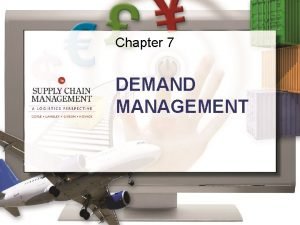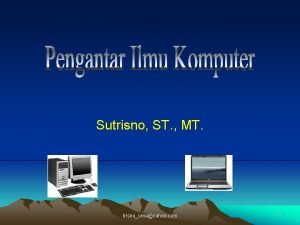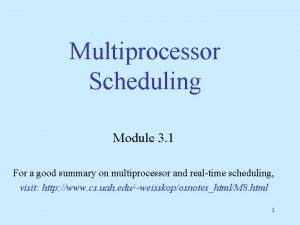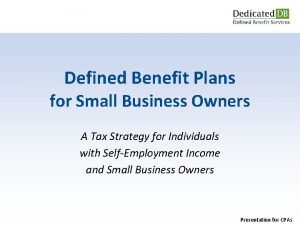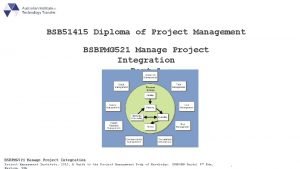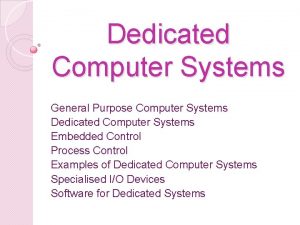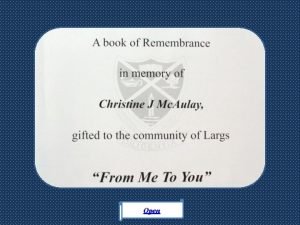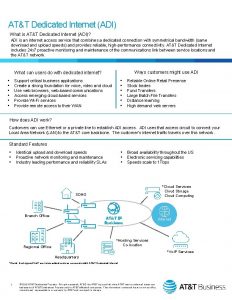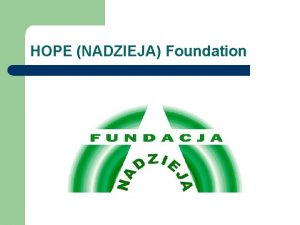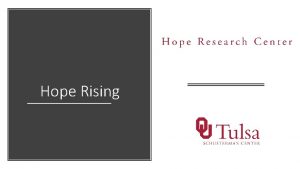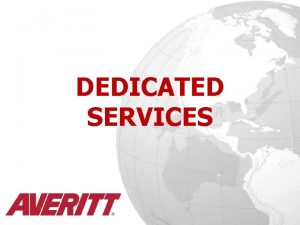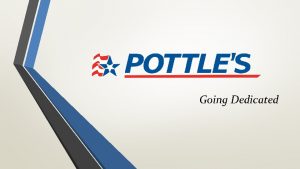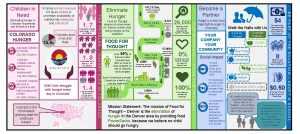Pathways Home Colorado Dedicated to the hope that
































- Slides: 32

Pathways Home Colorado Dedicated to the hope that future generations will not experience homelessness Effective policies Prioritized resources Engaged political leadership Collaborative partnerships

Interagency Collaboration is best practice and can take our efforts to scale Expanded positions in Governor’s Office made possible through generous funding from local foundation community. - Statewide approach - Works across state agencies to implement outcome-based policies and programs that prevent and end homelessness in Colorado. - Directs Pathways Home implementation

Homelessness in the Centennial State HUD’s annual Point-In-Time survey provides a snapshot of the number of persons experiencing homelessness in Colorado. In January of 2014 Colorado counted 10, 028 homeless persons.

181 Colorado School Districts reported 23, 293 Homeless Youth 2012 – 2013 Hotels/Motels Unsheltered Doubled-up Shelters, transitional housing, awaiting foster care 0 5000 10000 15000 20000

Introduction to Supportive Housing - A more humane solution to ending homelessness for families and individuals struggling with addiction, mental health and/or other disabilities who lack the social support, resources or ability to sustain and maintain housing without supportive services and subsidized housing.

Combining affordable housing with access to support services like case management, employment training, and mental health treatment, supportive housing is a nationally recognized best practice which gives vulnerable individuals and families the opportunity to live stable, autonomous, and dignified lives.

Housing Permanent: Not time limited; not transitional Affordable: Tenants pay no more than 30% of their income for rent Independent as possible: Resident holds lease with normal rights and responsibilities

Services Targeted: Based on populations served Flexible: Responsive to residents’ needs Voluntary: Participation is not a condition of residency Independent: Focus is on housing stability

Populations Served - Families Unaccompanied adults (singles) Reintegrating from corrections Veterans Dual Diagnosed Mentally Ill - Youth/Young adults aging out of foster care - Chronically Addicted - Chronically medically vulnerable or fragile -

Types of Supportive Housing - Single site: buildings developed / rehabilitated - Scattered Site: rentsubsidized apartments - Mixed-income buildings - Master-leased buildings or units

State Strategies Increase Permanent Supportive Housing (PSH) Statewide - Change PSH housing funding process at CHFA and the Division of Housing - Increase capacity through Pathways Permanent Supportive Housing Toolkit Process - Complete a Medicaid Crosswalk to increase access to Medicaid for PSH services - Increase state funded vouchers

Financing Supportive Housing Traditional Affordable Housing Capital Operating The most difficult and least stable to finance as residents have complex needs Supportive Housing Capital Operating Services

Affordable Care Act: An Opportunity � Expansion states now include homeless single adults � 5% of Medicaid beneficiaries account for 50% of program costs � Additional resources in ACA provided to find new approaches to cost containment � Time is now as federal government pays majority over the next few years

State of Colorado and ACA �We know we are not utilizing Medicaid dollars in the most cost effective way with our most vulnerable populations �Bringing in expertise to understand our state specific Medicaid and BHO systems are critical to addressing homelessness

CSH advances solutions that use housing as a platform for services to improve the lives of the most vulnerable, maximizing public resources and building healthy communities.

For this population the lack of housing itself dictates health outcomes ◦ Denver study found 50% of tenants improved health status and 43% had improved Mental Health ◦ Seattle study found 30% reduction in alcohol use among chronic alcohol users in Supportive Housing ◦ Chicago study found 55% survival rate for people living with aids in supportive housing compared with 35% of control group, and lower viral loads among housed group

ACCESSING MEDICAID FOR SERVICES ATTACHED TO HOUSING ALSO SAVES COSTS Chicago, IL: PSH saved almost $25, 000 Portland, ME: Medicaid costs were reduced by almost $6, 000 * All $$ amounts are person, per year CSH’s Frequent Users of Health Systems Initiative found that prior to housing residents of supportive housing had ER and hospital inpatient costs over $58, 000. Two years after housing, residents incurred only $19, 000.

Colorado’s Medicaid Crosswalk What is a crosswalk? ◦ Analysis of Permanent Supportive Housing services covered in current Medicaid plan ◦ Clarifies differences by subpopulations ◦ Opportunity for stakeholder input ◦ Identifies what can be billed now, may encourage new billers ◦ Identifies Gaps/Opportunities

Colorado Business Case �What’s a business case? ◦ Medicaid cost savings ◦ potential �Process ◦ Need State information on high cost and housing need ◦ Compare to current cost of PSH (engage stakeholders) �Provides financial motivation for policy changes

Draft Colorado Medicaid Crosswalk and Business Case Updated by Jenn Lopez for NAHRO Conference with feedback from Peggy Bailey Director of Health Systems Integration May 2015 The Source for Housing Solutions

Review Purpose § § Target supportive housing to appropriate populations Grow capacity for permanent supportive housing– multiple reasons End chronic homelessness Reduce Institutionalization (jail, prison, nursing facility, mental health, etc) Control Medicaid cost for most expensive Improve health outcomes § Improve Services financing Stretch current resources farther Make case for increased housing resources § National supportive housing cost studies show as much as a 61% decrease in costs Identify opportunities in CO to achieve similar results

MEDICAID 101 § Medicaid: a public health insurance that pays essential medical and medically-related services for people with low-incomes. The state and federal government jointly fund Medicaid. § The State Medicaid Plan: an agreement between the state and federal government that determines what services are covered and how each entity pays. The federal agency that oversees state plans is CMS (Centers for Medicaid and Medicare). § Waivers and Amendments: States and CMS can agree to provide optional benefits and states can apply for waivers or plan amendments. Most are done under a federal statute called Home and Community Based Services (HCBS).

MEDICAID 101 Cont. § States can pay providers directly for services or they can contract with managed care organizations (MCO’s) to negotiate contracts with providers. In some cases MCO’s provide services directly. § The state and/or MCO’s decide licensing requirements and staff qualifications that determine what agencies can bill Medicaid for services. § Colorado is an expansion state which means that virtually all people with extremely low-incomes qualify for Medicaid benefits (versus a limited definition prior to ACA). § Colorado also has several waivers which gives the state the authority to offer extra or alternative services through Medicaid to people who meet a specified level of need as long as the state can show that providing such services will produce cost savings.

MCO’s § Regional Care Coordination Organizations (RCCO) strive to coordinate all service delivery and pay for care coordination. § Behavioral Health Organizations (BHO) pay specifically for behavioral health services (BHO). § The state negotiates contracts with MCO’s to manage services and pays them to do so on a per-member-per-month (PMPM) basis. § BHO’s use state funds to pay direct service providers to deliver services. § BHO’s have some discretion in how they pay for services and for which services they will considerable billable under their contract.

Medicaid Business Case § Determines if there is a Return on Investment (ROI) potential for Medicaid financing supportive housing services § Developing the Business Case: CSH collects state information on high cost users and housing status Compares current Medicaid costs to existing costs of services in permanent supportive housing (services only) § If a business case does exist to cover PSH services it provides financial analysis to support policy changes leading to supportive services coverage or better access to funding from Medicaid

Medicaid spending on persons experiencing homelessness § HCPF provided cost by decile groups § Top 10% of population that is experiencing homelessness spent $74 million (while homeless) Average $1, 666 person, per month Accounts for 46% of total spending for the population (both homeless and non-homeless spans) Next 10% spent $19 million

Data for Top Decile Top 10% Medicaid Expenditures $23, 229, 294 Homeless Months $74, 375, 122 3, 700 People = $97, 604, 416 in Spending Non-Homeless Months

Cost of Supportive Housing Services § Provider costs from survey Average $609 person, per month ($500 low, $718 high) Estimates base on current spending, not exact costs § CSH estimate Medicaid benefit would cost $450 person, per month Other state and local sources needed for non-Medicaid portion Could be more or less depending on population target § Targeting 3, 700 top spenders could yield $1. 5 million in savings § Based on conservative assumptions Due to services cost estimates process Issues raised when comparing homeless vs non-homeless spans

Services Crosswalk § HCPF staff Compared Supportive Housing Services chart with Medicaid authorities § State Plan § HCBS waivers § Behavioral Health § CSH staff Interviewed and Surveyed 13 agencies (Denver and West Slope) Both Medicaid and non-Medicaid billers

Crosswalk Findings § There are ways to currently bill for Supporting Housing Services BHO contracting – provides most comprehensive coverage EBD and CMHS Home and Community-Based Services Waivers (other HCBS waivers could also be used, these serve larger percentage of the population) § Services not covered and requires other state funding resources Tenant Move-In/Orientation Tenant Rights Legal Assistance Emergency Financial Assistance Furnishings Conflict Resolution/Mediation Credit Counseling Substance Use Group Counseling (AA/NA/CA) Sober Recreation Education – job training Job Development Parental Services (child care, parenting classes, domestic violence assistance, family reunification)

More Findings § Little difference between services provided by non-Medicaid billing entities and Medicaid billing entities. § Medicaid Gaps People Experiencing Homelessness Without a Behavioral Health Diagnosis or Disability Limited Provider Billing Provider Understanding of Medicaid Coverage Vs. Non-Coverage § Significant misunderstandings exist b/t providers and Medicaid Program (includes, state, BHOs, RCCOs, etc)

Recommendations for State Integrate supportive housing services into the State Medicaid delivery system within the Accountable Care Collaborative (ACC). RCCOs and BHOs should be informed of the housing services available for Medicaid clients and partner with the community based agencies providing housing and supporting housing services in their regions. Use Toolkit training model to expand trainings to: 1. inform RCCOs and BHOs of housing services available to Medicaid clients. 2. educate housing and supportive housing service providers about the role of the RCCO’s and the BHO’s and how to partner with them to assist their clients in achieving housing stability
 Thể thơ truyền thống
Thể thơ truyền thống Hãy nói thật ít để làm được nhiều
Hãy nói thật ít để làm được nhiều Thơ thất ngôn tứ tuyệt đường luật
Thơ thất ngôn tứ tuyệt đường luật Tôn thất thuyết là ai
Tôn thất thuyết là ai Phân độ lown
Phân độ lown Walmart thất bại ở nhật
Walmart thất bại ở nhật Gây tê cơ vuông thắt lưng
Gây tê cơ vuông thắt lưng Block nhĩ thất cấp 1
Block nhĩ thất cấp 1 Tìm độ lớn thật của tam giác abc
Tìm độ lớn thật của tam giác abc Sau thất bại ở hồ điển triệt
Sau thất bại ở hồ điển triệt Plurals of flower
Plurals of flower She said that, home economics stands for the ideal home.
She said that, home economics stands for the ideal home. Arti dari home care
Arti dari home care Oak springs mobile home park
Oak springs mobile home park Come home come home jesus is calling
Come home come home jesus is calling Home sweet home survive crash
Home sweet home survive crash Perbedaan home care dan home visit
Perbedaan home care dan home visit Go to my house
Go to my house Mobile home exchange
Mobile home exchange Jr rabbin imam pretre
Jr rabbin imam pretre Romeo and juliet real story summary
Romeo and juliet real story summary Insurance dedicated funds
Insurance dedicated funds Dedicated fulfillment
Dedicated fulfillment The state or quality of being dedicated to a cause
The state or quality of being dedicated to a cause Contoh dedicated it system di atas kapal
Contoh dedicated it system di atas kapal Vodafone private cloud
Vodafone private cloud Dedicated processor assignment
Dedicated processor assignment Dedicated defined benefit services llc
Dedicated defined benefit services llc Bsbpmg511
Bsbpmg511 Contoh general purpose it system
Contoh general purpose it system What is a general purpose computer system
What is a general purpose computer system What is april dedicated to
What is april dedicated to Att dedicated internet
Att dedicated internet






















